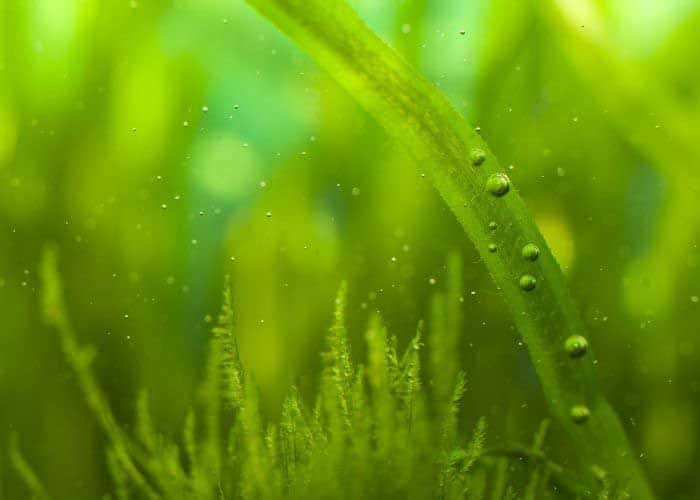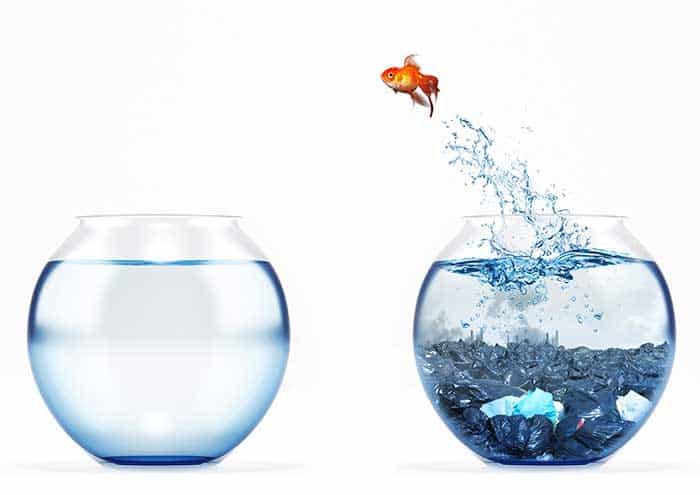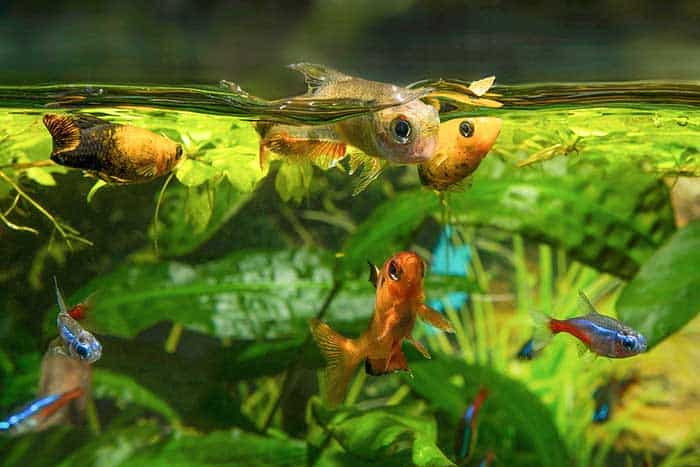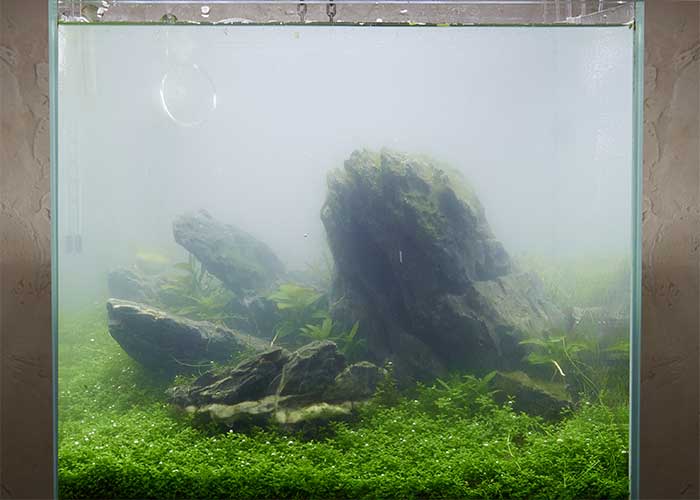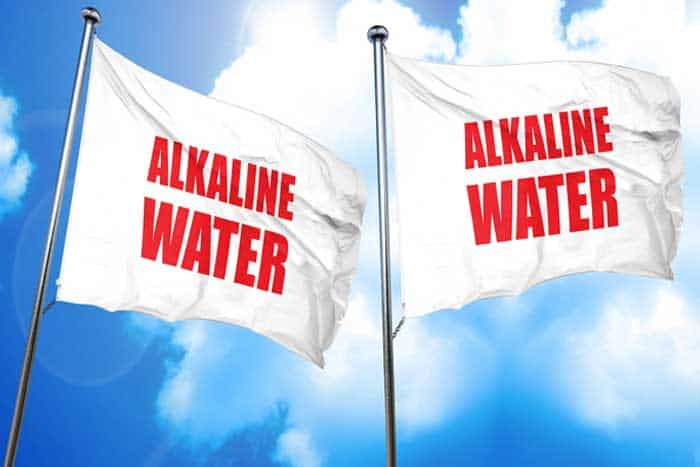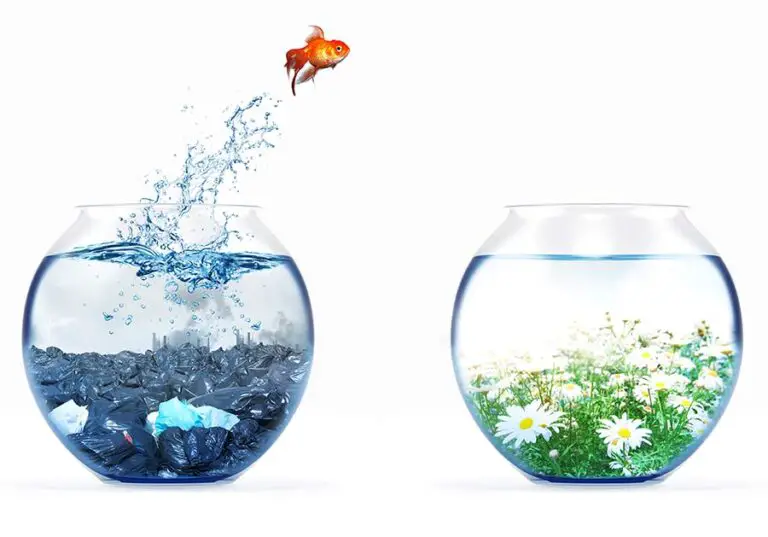How To Remove Hard Water Stains From Fish Tank (In 6 Steps)
Hard water stains are common in fish tanks due to the humidity and constant water evaporation. Evaporated water can leave behind a chalky residue on the glass surface, which can become quite challenging to remove, especially over time.
If you want to know how to remove hard water stains from fish tank glass, hood, or anywhere else, there are some basic steps to take.
- Remove some water from the tank and place it in a separate holding tank. This is where you will keep your fish, and by using water from the main tank, you avoid shocking the fish.
- Remove your fish carefully with a net and place them into the holding tank.
- Remove all water using a gravel siphon or similar for heavily stained glass. If the stains are not too bad, you will not need to remove all the water. Minor staining requires softer cleaning substances that won’t harm fish if accidentally mixed with the water.
- Select the appropriate cleaning solution and allow it to soak into the stains; then, using a soft toothbrush, algae scraper, or similar, you can try to loosen the stains. More difficult stains require you to repeat these steps.
- Wipe any remaining residue away with a dry cloth or kitchen towel.
- Refill your tank with the water you removed, and return your fish to their tank.
The cleaning process above may seem quite obvious, but removing hard water stains is not that difficult. Some variations are dependent on the type of tank you have, the level of staining, and the chemicals you are using.
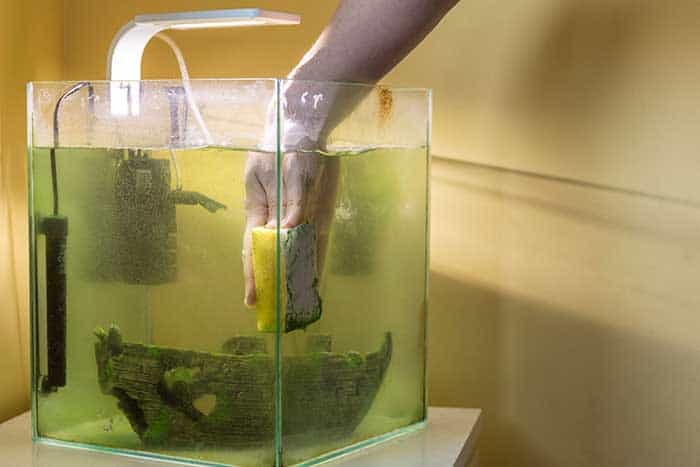
The rest of this article covers specific cleaning solutions recommended when cleaning hard water stains from fish tank glass. I will also cover the methods required to clean plastic and acrylic tanks.
Finally, I provide a few of my own tips to remove the most difficult stains while explaining how to prevent calcium buildup in your fish tank to avoid future problems.
What Causes Hard Water Stains In A Fish Tank?
Hard water stains in a fish tank are typically caused when mineral-rich water begins to evaporate. The evaporated water leaves the heavier minerals behind, attached to the glass surface, causing a white residue, which is usually a mixture of calcium and magnesium, often called limescale.
Over time, as pure water evaporates, the minerals left behind become more concentrated, making the stains thicker and more difficult to remove. Topping up the water in your tank is best done using a source of pure distilled water, as this replaces the pure water that has evaporated without adding extra minerals.
Hard water will usually be present in your fish tank if you live in an area with hard water or are using unfiltered water from a well or natural spring. You may also notice a white chalky buildup of limescale around your taps or kettle. The best way to determine if your water is hard is to use a test kit.
If you live in a hard water area, it is important to use a water conditioner when adding new water to your tank. Water conditioners remove chemicals such as chlorine to make the water safe for your fish, and it also helps remove many of the minerals present in the water.
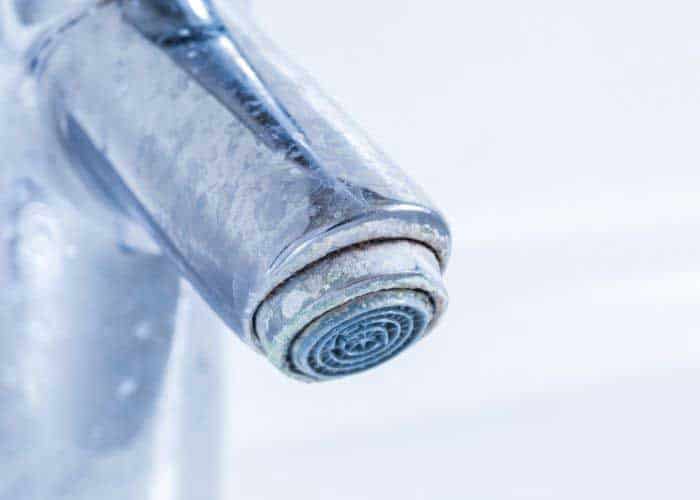
How To Remove Hard Water Stains From Glass Fish Tank
If you have hard water stains on your fish tank glass, there are a few ways to remove them. Stains that have been left to build up over time will be more challenging to remove, whereas lighter, chalky stains will easily wipe away with a soft brush.
You can use a soft toothbrush or algae pad for scrubbing the glass. Don’t use stiff brushes or scouring pads, as they can scratch the tank glass, causing permanent damage.
If the stains on your aquarium glass are a chalky, white residue, the methods for cleaning them are much gentler on your tank and its inhabitants. Generally, I recommend removing your fish as stated in the steps at the beginning of this article, although light stains may not require you to remove your fish.
The cleaning solutions that you will be using don’t contain any harsh chemicals, but they may alter the pH of your tank if they enter the water in large amounts. Drastic changes to pH can cause illness and shock to fish, so remove 3-5 inches of water into a bucket to give yourself room to work. You can return the water after cleaning.
First, try using vinegar. Mix equal parts vinegar and water in a spray bottle and mist the affected areas. Let the solution sit for a few minutes, then wipe it away with a soft cloth. Using vinegar to clean a fish tank is a great choice but lemon juice is another alternative. Both are pretty acidic and help lift the glass’s stains.
Hard water is generally quite alkaline with a high KH (Carbonate Hardness) and a strong buffering capacity against acids, so neither should drastically affect your pH in small amounts.
If using Vinegar or lemon juice doesn’t work, you can try using a paste made from baking soda and water. Again, apply the paste to the stains and let it sit for a few minutes before wiping it away. Baking soda is a great oxidizing agent that lifts stains quite easily.
You can also scrape off thick limescale deposits, but you should exercise caution, or you may scratch the glass. A razor blade can help scrape away thicker deposits, although you need to hold it flat against the glass to avoid causing any damage.
Persistent stains may require a commercial hard water stain remover, and you should empty your tank of fish and water before using these more potent chemicals. These products are available at most hardware stores and can effectively remove stubborn stains. Whatever method you choose, be sure to rinse the tank thoroughly after cleaning to remove any residue that could harm your fish.
How To Remove Hard Water Stains From Plastic Fish Tank
Plastic fish tanks are more fragile than glass, so you need to take extra care when cleaning them. Non-glass fish tanks are generally made of acrylic, a form of plastic. Acrylic is lighter, cheaper, and easier to repair, but it is also easier to scratch and damage.
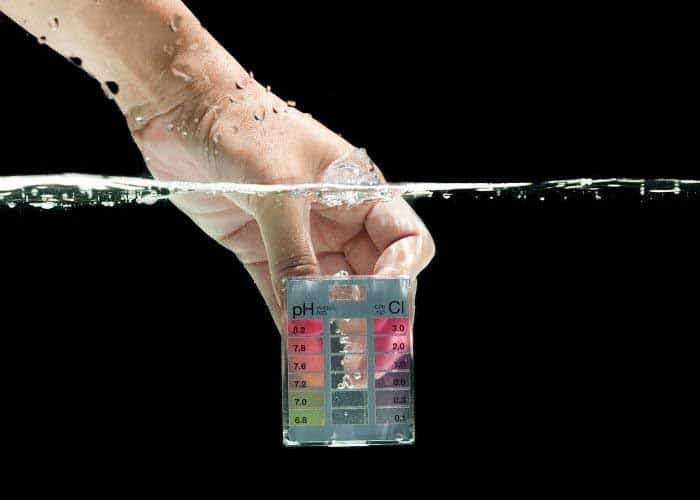
You can also use most of the methods above to remove hard water stains on acrylic fish tanks, except for a razor blade or excessively harsh chemicals.
Acrylic is much softer than glass, so scraping or rubbing with anything but the softest of brushes or cloths can cause scuffing and scratching to the glass. If you choose to use a razor blade or algae scraper, you not only risk scratching the tank, but the solid calcium deposits may scratch the tank as they are removed.
Plastic and acrylic are also more porous than glass, so the chalky residue may seep into the pores and become harder to remove. You may need to soak the stains for longer and use a fine bristled, soft brush to remove these stubborn stains.
Because plastic is also more porous than glass, harsh chemicals may burn or distort the plastic or cause discoloration and misting to the surface. Caustic soda, sulfuric acid, and similar chemicals should be avoided or used at your own risk.
How To Prevent Calcium Buildup On Fish Tank
Softening your aquarium water, especially if it’s excessively hard, will help to prevent calcium buildup on your fish tank glass, although calcium and other minerals that are found in hard water can be beneficial to aquatic life, so you wouldn’t want to remove them altogether.
Before softening your aquarium water, you should find out its hardness level with a test kit and find out a level of hardness that is suitable for your fish. If your water is too hard, you can read: How to soften aquarium water (Quick and easy solutions) for some tips.
Because the main cause of scale on your fish tank glass is water evaporation, you should check the water level frequently as you need to replace lost water. Replacing water will dilute the minerals, but add water with low mineral content, such as purified, distilled water.
I have already explained that only water evaporates, as minerals are left behind, so the concentration of minerals increases over time.
It would help if you also considered using a hood or lid that allows water vapor to collect as it eventually drips back into the fish tank, reducing evaporation.
Summary
Hopefully, this article has given you insight into why limescale and calcium deposits can build up on your fish tank glass. Hard water stains can be found around your heater and filter but are most commonly found around the waterline. The humid and damp glass contains high levels of these minerals when they dry out.
Don’t forget to clean aquarium decorations, as they can also become covered in limescale.
Hard water stains are not too difficult to remove if done frequently, but over time they can become solid and almost impossible to shift without some heavy scraping which can damage the glass.
Acidic compounds such as vinegar and lemon juice mixed into a spray bottle can break down the scale deposits, making them easier to remove without causing any actual harm to your fish if used in small amounts. Extensive cleaning using commercial chemicals requires you to empty the tank, effectively starting from scratch.
If your hard water stains appear quickly and are not caused by the evaporation process, it may mean your water is excessively hard. There are ways to soften the water, but you need to measure its hardness with a test kit first.
If you live in an area with very hard water, you should treat the water before using it in your tank. You can also use distilled water, although water that is too soft and lacking in minerals is also not a good solution. Live plants and fish thrive on the minerals found in water, so try and find a healthy balance.


